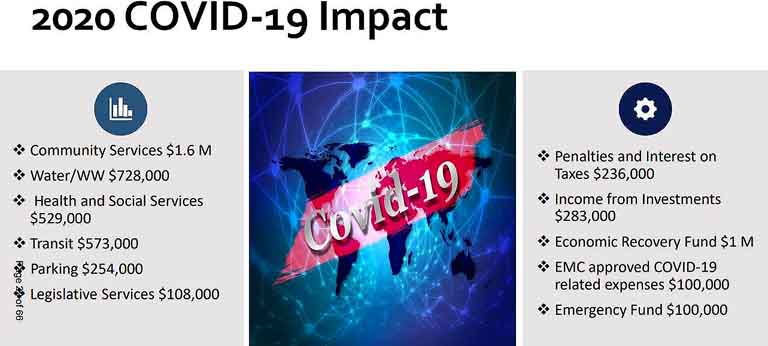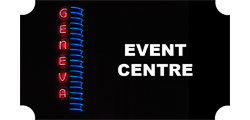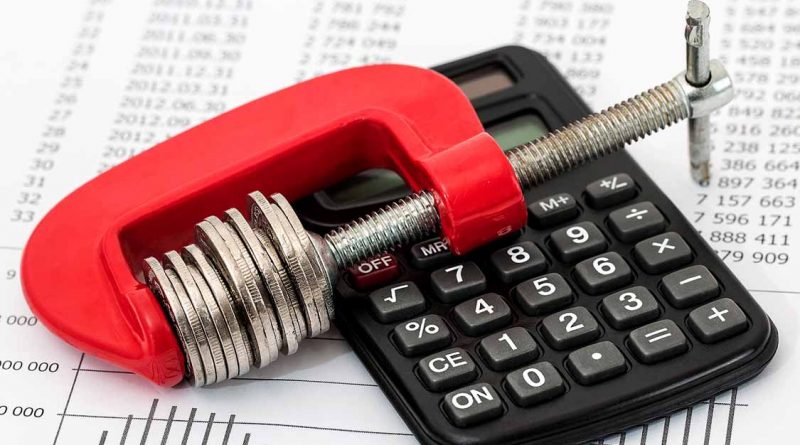2021 Budget Process Begins
By John Swartz
Orillia council will take its first stab at the 2021 budget Thursday morning at 9 a.m. There is an overriding specter to crafting next year’s spending plan – effects of COVID-19 this year and next. The term, COVID, makes its first appearance on page 1 of treasurer Jim Lang’s report setting up the preparation of the budget council will deal with in the fall.
![]()



He includes data on the Ontario economy which council should take into account.

Nothing could illustrate better why municipalities have reserve funds than the current situation. There is for the first time in memory a budget deficit projected. The current estimate is $5.5 million. In recent years there have been annual budget surpluses of $1 million or more.
Council has already approved $1.2 million from the tax rate stabilization reserve to be used against this. Additionally, there are cost savings of $1.8 million (temporary staff reductions) which will further reduce an overall deficit to $3.7 million.
More reductions council could direct toward the deficit are grants and additional tax revenues which weren’t planned – and savings of $630,000 (so far) from the delay in opening the Orillia Recreation Centre. Those could knock another $1.5 million off the deficit.

The budget expected in November is for $62.4 million and will increase property taxes by 1.8%. Council has two options to decide how to direct staff with the next steps of preparing the budget – take the budget increase and resulting higher tax bills, or take the increase and use another $1.2 million from the tax rate stabilization reserve so there is no increase to tax bills in 2021.
Typically budgets increase at or about 2% because of inflation. Lang notes using reserve funds to provide a 0% change in 2021 is really only a deferral, since that increase will show up in 2022, and there will also be an inflationary effect then as well. This could result in an increase in 2022 of 4%.
Not mentioned so far is an inflation adjusted increase to reserve contributions. This would add another 1% to tax bills. Lang is not recommending any increase, contributions to reserves would still be made, but at this year’s levels. Not increasing the reserve contributions this year would not compound, or add to such an increase in 2022.
The simple analogy of how this works is, if one takes money from the coffee can to pay a monthly increase in costs this month because you are short, those increased costs will still show up next month and add to that month’s increase. Not putting money into the coffee can (reserves) one month does not necessarily have to be made up the next month and regular contributions can resume.
Other Factors
Lang states more than 50% of the budget is beyond the control of staff to set. This means things like supplies, electricity, gas, and etc., and cutting staff, outside services, or foregoing other expenditures which the City cannot control will only affect less than half of the total budget.
The province has put off the property tax assessment update. It was last set in 2016. This means any change to the tax base won’t happen in 2021, other than new property development which does add to the tax base.
Stormwater Rates
At the last budget, councillor Tim Lauer asked for a report regarding how to best proceed with an effective stormwater rate. This was implemented in 2017 as a flat rate per property.
Staff investigated what other communities are doing and are recommending a change in how the rate is calculated for each property. In addition to a base rate per property they would also calculate how much ground cover on each lot (think rooftops, paving) there is and base charges so those with greater runoff are paying more toward the reserve.
The necessity for the reserve is in anticipation of provincial regulations for treatment of ground water, which the City, and virtually all municipalities, do not do. The City has 80 km of stormwater pipes, 200 km of ditches, 2,400 catch basins, 6 stormwater management ponds, one pumping station and 3 oil and grit separators. Most of the City’s stormwater goes straight into Lakes Couchiching and Simcoe.
The 2016 storm water master plan estimated the City needs to spend $3.25 million per year until 2036 for maintenance. Any regulation for treatment would be additional. It should be noted the City just spent $18 million on a third stage water treatment facility to remove phosphates from the wastewater treatment facility output.
Staff are recommending council direct them to prepare the 2021 budget based on a new formula which includes impervious (rooftops, etc.) ground cover, and it is expected there will be a rate increase regardless if the current flat rate or a new one applies.
![]()



Strategic Plan
Following the budget committee meeting, council has a special meeting for the 2018-2022 Strategic Plan. The report is quite detailed and includes updates to all 2020 projects and programs. It can be viewed here.
(Images Supplied)

